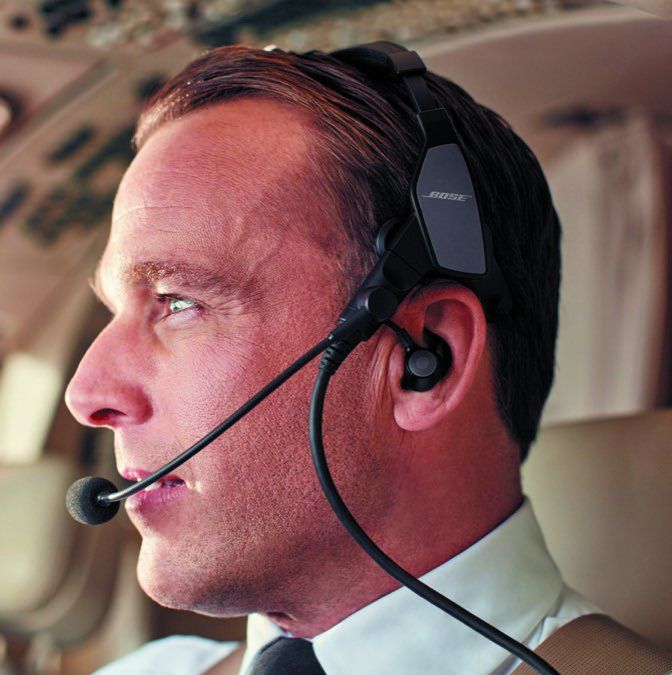Last spring Bose introduced the ProFlight in-ear noise-cancelling aviation headset not as a replacement for the hugely successful circumaural (around the ear) A20 model. Instead, the ProFlight is targeted at applications where the A20 might be overkill, or for cockpits with less noise-mainly jets-and for crews who fly long stretches at a time.
Bose says the ProFlight is the smallest and lightest active noise-cancelling headset on the market, but reiterates that it isn’t intended for noisier piston cabins. For this field report we tried the ProFlight in a variety of aircraft, including pistons, turboprops and jets.
Unique Design and Fit
At 4.9 ounces, the ProFlight really is a featherweight in the noise-cancelling headset market. It’s reasonably compact, too. With the adjustable head sliders not extended, the set measures 8.43 by 6.34 by 3.15 inches. Check that against the circumaural A20, which weighs 12 ounces and measures 8.4 by 6.3 by 3.2 inches.
Worth mentioning is the ProFlight has FAA TSO and EASA E/TSO C139a certification, and Bose says the set is compatible across multiple TSO-certified avionics systems. The headset is available in dual-plug general aviation, 6-pin Lemo, 5-pin XLR and 7-pin XLR configurations. The dual-plug set runs on AA batteries, while the rest are powered by bus voltage.
The phone audio passes through earbuds, but the set’s electronics sit atop of rotatable side pads that rest on each side of the head. While we didn’t find the set uncomfortable, every person in our trial commented that it takes a few uses to acclimate to the set’s fit-and that includes fitting the correct sized earbuds. That’s an extremely important thing to get right, otherwise performance will be seriously compromised.
According to Bose, it may take several flights wearing the Pro-Flight before it becomes as routine as using a traditional headset and it’s right. It starts by selecting the proper Stayhear+ eartip size and Bose provides a pack of small, medium and large tips inside of the supplied storage case. Bose says the medium tips are the default size that fits roughly 80 percent of users. Also, you might find that you need one size in one ear and another size for the other ear. Experiment with this fitting process before going to the cockpit-it will save a lot of time and effort.
Since the ProFlight has active noise reduction and Bluetooth, the standard set uses two AA batteries that are loaded into the control module. Battery endurance is listed as over 45 hours when the Bluetooth circuitry is off and at least 25 hours with the Bluetooth on. The module seems just the right size in the hand and has a high-quality feel.
The set has a quick-release side-swappable microphone and down-cable, which enables you to mount the boom mic and cable on either side. By default, the set ships from the factory with the reversible microphone attached to the left side of the headset. The microphone is properly in place when it falls roughly 0.5 inches from the lips, with the white surface facing the lips.
We like that there are no tools required to release the down-cable-simply unplug and reattach it by hand in a matter of seconds. Speaking of cables, it’s apparent that the set’s main interface cable is stiffer and thicker than ones used on other sets. Bose says it used the thicker flame-retardant and mold-resistant cable so the headset performs better in high electromagnetic interference environments and under high electrostatic discharge conditions. It also insulates and wraps the required additional conductors separately from the audio interface harness. All of this contributes to a thicker and stiffer cable with less flex than you might be accustomed to. But we think the tradeoff is worth it because the main cable on aviation headsets is the most failure-prone component, especially around the area of the plugs. Bose said the ProFlight passed flex tests that lasted tens of thousands of cycles.
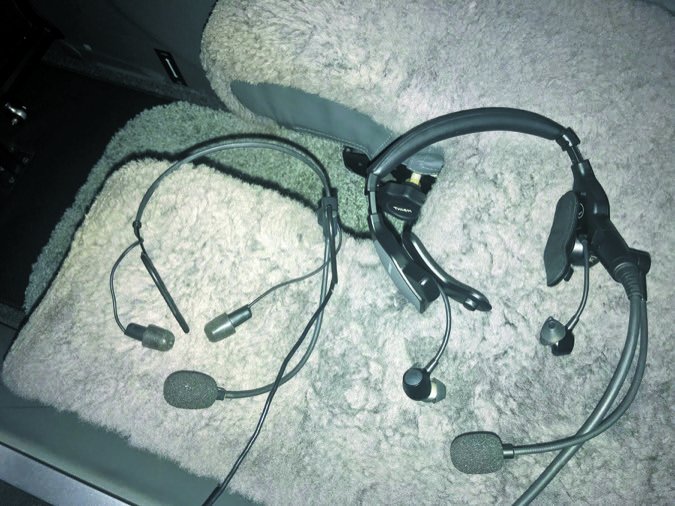
Bose put a lot of thought into the way the earbuds are wired from the headset frame/main chassis and route into the ear, although our group of evaluators unanimously commented that getting the buds correctly into the ear the first time is a definite challenge. The buds have umbrella-shaped silicon tips that really don’t need to fit deeply into the ear. That’s a plus for folks who generally are intolerant of earbuds, especially when wearing them for long periods of time.
When fitted properly, the wing of the silicon tip should fit just under the ridge of the ear. There’s a process for ensuring you’ve got it right. The drill is to try speaking aloud while wearing the headset while it’s powered off, or in passive mode. Make a low-pitched “eee” sound and your voice should sound amplified and balanced in both ears. This is sort of like it sounds when plugging the ears with fingers. If it doesn’t quite sound balanced, try a different size tip or a combination of sizes.
Swapping the Stayhear+ earbuds is also a learning experience and there is a specific process that we initially botched, breaking one of the tips. While holding the earbud, gently grasp the tip and peel it away from the earbud by the base-and not by the tip wing-otherwise it will tear.
To install the new tip, align the opening of the tip with the earbud nozzle and rotate the tip onto the nozzle until it clicks into place. If you want to wear the set with one earbud, you can stow the unused bud using the earbud storage hook on the back of the side pad. It works.
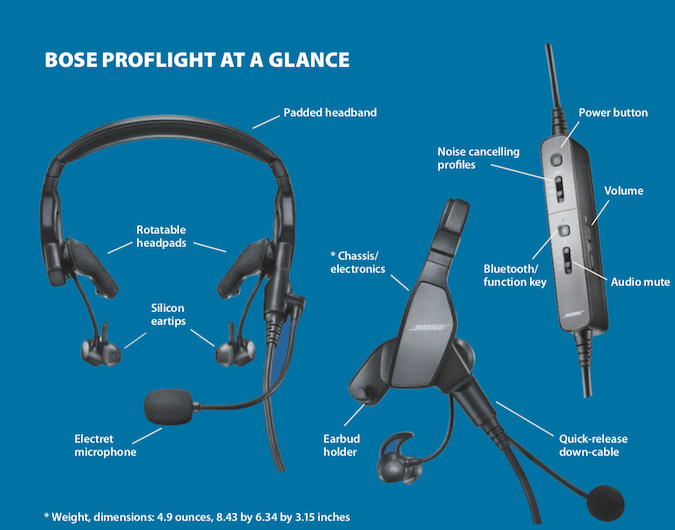
Noise Cancellation, Tap Control
The ProFlight has three profiles of active noise cancellation, or ANC. Bose is careful not to refer to these profiles as “levels” of ANC because that’s not what they are. Just about everyone who tried our demo set incorrectly and understandably assumed that the set’s low, medium and high profile settings coincided with the amount of noise cancellation the set would provide. It doesn’t work that way and Bose thinks of the settings in terms of fitting an appropriate environmental factor.
In some cabins, the medium ANC profile works better than the high profile, while the high is better suited for others. Interestingly, the low setting is a “hear-through” mode, which optimizes voice frequencies outside the intercom circuit. That’s so the crew wearing the ProFlight might be better able to hear what’s going on around them.
For instance, while at the gate on turnarounds, airline crews generally always have the need to talk with others who might be coming in and out of the flight deck. As a result, the low setting is only for use on the ground and eliminates having to remove the earbuds. In our trials, the low setting was nearly useless in flight, even in the most quiet cabin.
One of the most clever functions of the ProFlight is the patented tap control talk-through communication, which works when the headset is in the medium or high ANC profile modes. Double-tapping either earbud simply opens up the audio (for the specific ear) so you can hear what’s going on around you, or from a specific direction. As a real-world example, you’re wearing the set, settled into cruise flight and a passenger or flight attendant wants to talk to you. Double-tap either earbud for talk-through communications, then double-tap it again to go back to the previously set ANC profile.
Bluetooth, Indicators
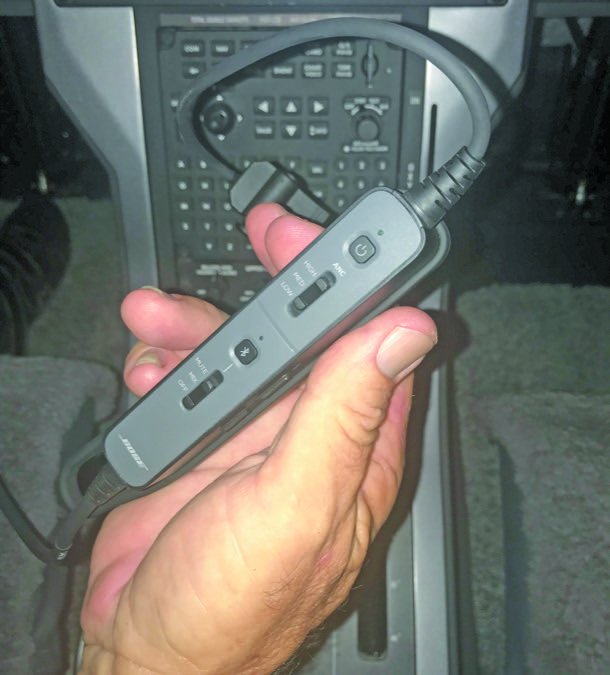
Like the A20, the ProFlight has a decent Bluetooth feature set, made better by the Bose Connect tablet and smartphone app. The app smartly allows you to connect two ProFlight headsets to the same mobile device to share music and audio alerts from cockpit apps. The headset can connect with two sources at the same time, plus you can also answer, end and decline phone calls from the module’s Bluetooth/multifunction key. Adjust the volume with controls on the side of the module.
The multifunction key is also used for Bluetooth pairing, and there’s a status annunciator right above it. It blinks blue when connected and purple when the set is ready to pair. When the headset is connected to aircraft power, the annunciator slowly blinks green and blinks faster when the set is using the AA batteries. When there’s less than eight hours of AA power remaining, the annunciator blinks amber and it blinks red when there’s less than two hours remaining. This lamp is dimmable by double-pressing the power key-a nice touch.
Bluetooth paring is fast and reliable and you have the option of controlling when the connected audio source will mute or mix with the headset’s native audio with a Mute and Mix slider switch. In Mute, the Bluetooth audio temporarily mutes when there’s intercom chatter and all audio is combined when it’s in Mix. Off is just that-there’s no Bluetooth.
Music quality through the set is good, although we give the A20 an edge. You can use the ProFlight for listening to Bluetooth audio (or for phone calls) when it’s unplugged from the intercom.
Performance
Bose makes it clear that the ProFlight doesn’t touch the level of noise-cancelling performance of the model A20 and it wasn’t intended to do so. Remember, the ProFlight is intended for airline and bizjet applications where the cabin noise is low. Still, we realize that some pilots of piston models with reasonably quiet cabins (newer Cirrus and Piper PA-46 models are two that come to mind) might be willing to sacrifice some performance for comfort. To them we say stick with the A20, the Lightspeed Zulu 3 or even the Clarity Aloft Link in-ear model, which we crowned the in-ear headset champ in a shootout for the December 2017 Aviation Consumer.
We tried the ProFlight in a new Cessna 206, a new Cessna 182 and in a Mooney that has an upgraded interior with lots of soundproofing. We quickly reached for our A20 in each of those aircraft-not even close to the level of performance the A20 offers.
But the real disappointment was when we tried the set in turboprop singles, including a Pilatus PC-12NG and also a Quest Kodiak. Not only did the ProFlight not offer the noise-cancelling performance of the A20, but the set’s ANC circuit had the tendency to cut in and out under what seemed to be vibration-including landing and even during takeoff. Our sense was the vibration triggered the talk-through mode, although Bose says you may experience a brief reduction in noise cancellation as the headset compensates for a momentary pressure change.
“The set’s performance was acceptable on the medium ANC setting and slightly better on the higher setting, but at certain power settings the headset was actually better when it was turned off (passive),” said one evaluator in the Kodiak. “I wouldn’t give up the Clarity Link for the ProFlight,” another said after flying with the Bose in the Pilatus. But everyone in our group seemed to agree that you’ll need to put on your eyeglasses before putting on the Pro-Flight, and the set is designed we’ll for wearing over a baseball cap. Overall, it got high marks for comfort when wearing eyeglasses.
Proflight In A Citation: Perfectly Adequate
Most of the headsets I’ve used are heavy and have high clamping forces. My experience with the Bose A20 in my Mooney and then in my current Cessna Citation Mustang is that they provide the best sound quality and fit, and with less clamping force and weight. On the other hand, the A20 is a bit overkill in the quiet Mustang cockpit. I measured 76 dBA in cruise at FL 410. That’s why I was anxious to try the Bose ProFlight on for size, which is what I did on two coast-to-coast trips to contribute to this Aviation Consumer review.
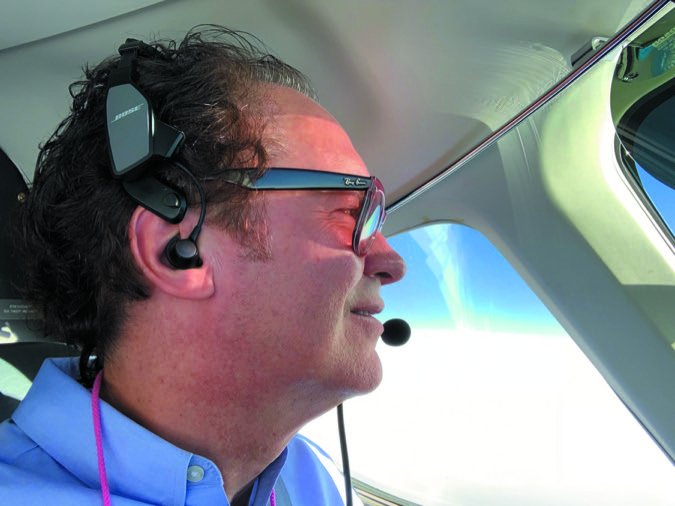
Compared to the comfortable A20, the ProFlight is lighter and in my view more comfortable still, but more finicky, not as quiet and doesn’t quite have as good of a sound quality.
Still, for the professional jet pilot who wears a headset all day and wants to travel light with the best possible comfort, I think the ProFlight can be a great solution-especially if that pilot finds that the A20 is too much headset. It can also be an alternative to other deeper-fitting in-ear headsets.
But you have to be certain you use the right size eartips and place the set in the correct position on the head. It’s a bit more complex than plopping on a traditional headset.
The ProFlight is also more sensitive to jostling and movement from items as seemingly unobtrusive as a cannula because the set is so light. But the comfort factor is unparalleled and makes the A20’s light clamping forces seem high by comparison, while the noise reduction isn’t as good as the A20’s.
But for light turbine aircraft like the Citation Mustang, the ProFlight’s noise attenuation and overall performance is perfectly adequate. For long flights, the set’s comfort is a real plus. It took some getting used to, but the more I wore the ProFlight, the more I liked it. I’ll likely buy one. -Joe Musumeci
Conclusion
The ProFlight is $995-the same price as the non-Bluetooth A20. Our conclusion is easy: If you fly a piston, this headset isn’t up to the task. It could work for some turboprops, but we strongly advise trying it first.
For light jets, we can recommend it based on its proven performance in a Citation Mustang, but still suggest trying it before buying it. Still, that’s smart advice we always give before investing in any headset.

